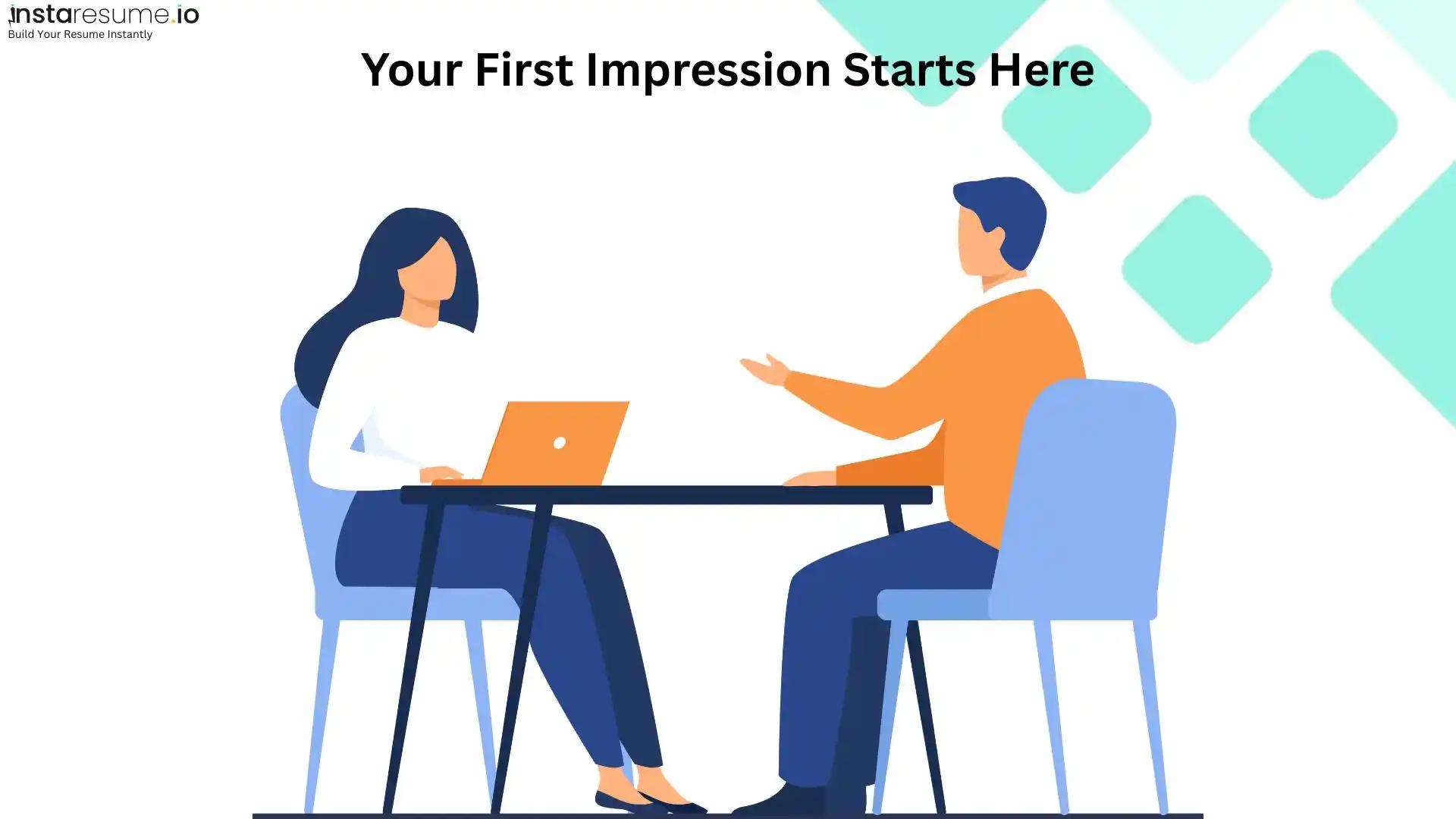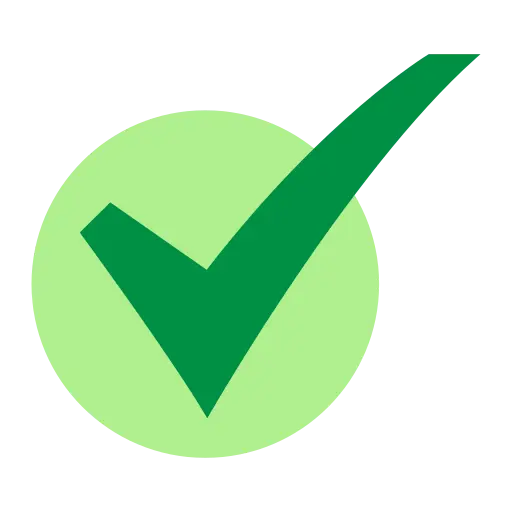How to introduce yourself?
Trust Score: 4.8
356 reviews

Table of Contents
“Please allow me to introduce myself.” These simple words are often the doorway to new opportunities. Whether you are in a job interview, walking into a meeting, standing in front of a class, or casually networking at an event, how to introduce yourself can shape the way others see you.
A confident self-introduction is more than just your name. It is your first opportunity to make a connection, to show professionalism, or to display a bit of personality. Done right, introducing yourself can build trust and create lasting impressions.
In this guide, we’ll walk through introduction examples for every situation professional, casual, academic, online, and more. We’ll also share tips, mistakes to avoid, and a final pro tip that will help you refine your self-introduction until it feels natural and impactful.
Why your self introduction matters
First impressions happen incredibly fast. Studies show that people often form opinions about you in the first seven seconds of meeting someone. This means your self-introduction plays a critical role in shaping how others perceive you. Whether you are walking into a job interview, attending a networking event, joining a new classroom, or meeting someone in a social setting, how to introduce yourself effectively can determine whether you create a positive connection or miss an opportunity.
A strong self-introduction isn’t just about stating your name and role—it’s about conveying confidence, clarity, and approachability. Even subtle cues like your tone, body language, and choice of words influence the impression you make. For instance, when introducing yourself professionally, highlighting key achievements or your expertise can instantly establish credibility. In casual or social situations, including a personal detail or interest in your self-introduction can make you memorable and relatable.
The power of a well-crafted self-introduction is that it can open doors to meaningful conversations, collaborations, and opportunities. Conversely, a rushed or unclear introduction may give others the wrong impression, making it harder to build trust. Learning how to introduce yourself confidently, with relevant details tailored to your audience, ensures you leave a lasting impact from the very first moment you meet someone.
The Role of First Impressions
 In professional settings, a confident self-introduction shows competence and credibility.
In professional settings, a confident self-introduction shows competence and credibility. In personal or social situations, introducing yourself warmly helps people feel comfortable and interested in connecting.
In personal or social situations, introducing yourself warmly helps people feel comfortable and interested in connecting.
Examples of Confident Openings
 “Hello, I’m Ananya. I’m a software developer specializing in app design. Outside of work, I enjoy photography and blogging.”
“Hello, I’m Ananya. I’m a software developer specializing in app design. Outside of work, I enjoy photography and blogging.” “Hi, I’m Rahul. I’m passionate about music and love exploring different cultures through travel.”
“Hi, I’m Rahul. I’m passionate about music and love exploring different cultures through travel.”
Tip: A confident self-introduction is not just about information—it’s about connection.
Structuring a Professional Self-Introduction
Knowing how to introduce yourself in a professional setting is essential, whether it’s a job interview, a client meeting, or a team introduction. A professional self-introduction is your chance to make a strong first impression, communicate your expertise, and highlight the value you bring to the table. It should be concise, relevant, and tailored to the audience, focusing on key details like your name, role, achievements, and professional goals.
A professional self-introduction should not only outline your experience but also show your personality and what sets you apart. For example, when introducing yourself in an interview, you might say: “Good morning, I’m Rohan, a software engineer specializing in AI solutions. I recently developed an automation tool that reduced processing time by 30%, and I’m passionate about creating technology that improves efficiency.” Similarly, in a team meeting or networking event, a concise self-introduction like: “Hi, I’m Ananya, a marketing strategist focusing on digital campaigns that drive engagement” can make you memorable.
Key Components
- Name
- Current role or expertise
- Years of experience and achievements
- Career goals or value you bring
Professional Introduction Examples
 Interview: “Good morning, I’m Mandeep Kaur. I recently completed my BSc in IT from GNDU University. With over five years of teaching experience, I specialize in interactive learning and classroom innovation. I’m excited to bring these skills to your institution.”
Interview: “Good morning, I’m Mandeep Kaur. I recently completed my BSc in IT from GNDU University. With over five years of teaching experience, I specialize in interactive learning and classroom innovation. I’m excited to bring these skills to your institution.” Meeting: “Hello everyone, my name is Rajesh. I’m a Project Manager at XYZ Tech. I focus on leading teams and delivering complex projects on schedule.”
Meeting: “Hello everyone, my name is Rajesh. I’m a Project Manager at XYZ Tech. I focus on leading teams and delivering complex projects on schedule.”
Pro Tip: Adjust your professional self-introduction for the situation. In a job interview, emphasize achievements; in a meeting, highlight your role in the project.
Casual & networking introductions
Knowing how to introduce yourself casually is an essential skill in social settings. When you meet someone new, it’s not about your resume—it’s about relatability, confidence, and approachability. A good self-introduction helps you connect instantly, break the ice, and leave a lasting impression.
Why Casual Introductions Matter
Learning how to introduce yourself is crucial for networking, friendship, and social confidence. A strong introduction shows your personality and interests while inviting conversation. Whether you are introducing yourself in a meeting, class, event, or online, the principles remain the same.
How to Introduce Yourself Step-by-Step
- Start with your name.
- Add a personal detail (a hobby, interest, or experience).
- Keep it friendly and confident.
- Invite conversation with a question or comment.
Examples
 “Hello, my name is Jiya. I enjoy reading and attending social events.”
“Hello, my name is Jiya. I enjoy reading and attending social events.” “Hi, I’m [Your Name]. I recently started learning photography. What do you like to do in your free time?”
“Hi, I’m [Your Name]. I recently started learning photography. What do you like to do in your free time?” “Hey, I’m [Your Name]. I love exploring new skills and meeting new people.”
“Hey, I’m [Your Name]. I love exploring new skills and meeting new people.”
Tips for Perfect Introductions
 Tailor your introduction to the situation.
Tailor your introduction to the situation. Be natural and avoid sounding scripted.
Be natural and avoid sounding scripted. Use confident body language.
Use confident body language. Engage others by inviting conversation.
Engage others by inviting conversation.
Example Casual Introductions
 Networking event: “Hi, I’m Neha. I work in HR, but outside of work, I love baking and share recipes on my food blog.”
Networking event: “Hi, I’m Neha. I work in HR, but outside of work, I love baking and share recipes on my food blog.” Party: “Hey, I’m Arjun. I play guitar in a local band and love meeting fellow music lovers.”
Party: “Hey, I’m Arjun. I play guitar in a local band and love meeting fellow music lovers.” Community group: “Hello, I’m Sunita. I enjoy gardening and organizing local volunteer activities.”
Community group: “Hello, I’m Sunita. I enjoy gardening and organizing local volunteer activities.”
Pro Tip: Share something personal that sparks conversation.
Academic self introduction: Classrooms & workshops
Academic self-introductions should highlight your education, projects, achievements, and personal interests. Start with your name and course or grade, then mention relevant projects or areas of study that showcase your skills.
Examples for Students
 “Good morning, I’m Ritu. I’m pursuing Biotechnology and recently completed a research project on DNA sequencing.”
“Good morning, I’m Ritu. I’m pursuing Biotechnology and recently completed a research project on DNA sequencing.” “Hello, I’m Arjun. I’m studying Mechanical Engineering and interested in renewable energy projects.”
“Hello, I’m Arjun. I’m studying Mechanical Engineering and interested in renewable energy projects.”
Examples for Teachers
 “Hello everyone, my name is Neena Sharma. I’ve been teaching English literature for ten years and love guiding students in creative writing.”
“Hello everyone, my name is Neena Sharma. I’ve been teaching English literature for ten years and love guiding students in creative writing.”
Pro Tip: Mention your academic focus, a project, or a research interest.
Crafting an elevator pitch
An elevator pitch is a 30–60 second personal summary that helps you introduce yourself clearly and confidently. It should highlight who you are, what you do, and what makes you unique.
Structure
Name + Role/Skill + Achievement + Goal
Examples
 “Hi, I’m Meera, a software engineer focused on AI applications. I recently developed a chatbot that cut customer service response times by 40%. I’m excited to create tech that improves user experience.”
“Hi, I’m Meera, a software engineer focused on AI applications. I recently developed a chatbot that cut customer service response times by 40%. I’m excited to create tech that improves user experience.” “Hello, I’m Rahul. I’m a product designer who specializes in user-friendly interfaces. My last project increased app downloads by 30%.”
“Hello, I’m Rahul. I’m a product designer who specializes in user-friendly interfaces. My last project increased app downloads by 30%.”
Pro Tip: Keep it clear, confident, and flexible. Practice until it feels natural, not memorized.
Questions to Prepare Before Introducing Yourself
Preparing a self-introduction might seem simple, but doing it right can shape the way others remember you. Before you introduce yourself in an interview, meeting, or classroom, take a few moments to plan your key points. Here are some essential questions to guide you:
How do you introduce yourself?
Start by understanding your context.
In a professional introduction, focus on your name, role, and one key skill or achievement that defines you. This helps establish credibility immediately.
In a casual or social setting, share a few personal details such as hobbies, interests, or what you enjoy doing outside of work—it helps others connect with you on a human level.
Example:
“Hi, I’m Priya. I work in digital marketing, and I love helping small businesses grow their online presence. Outside of work, I enjoy baking and exploring new coffee spots.”
What details should I include?
Choose details that fit the purpose of your introduction.
If you’re introducing yourself professionally, mention your education, experience, and expertise.
In academic settings, focus on your field of study or recent projects.
For personal introductions, highlight your interests or achievements that show personality.
How long should my introduction be?
A great self-introduction is short, focused, and memorable. Aim for about 30 to 60 seconds—enough to make a connection without overwhelming your listener. Keep your sentences natural and avoid long lists of achievements.
How do I introduce myself in different contexts?
Adapt your introduction to the environment and audience:
 In an interview: Emphasize your skills, experience, and what you bring to the role.
In an interview: Emphasize your skills, experience, and what you bring to the role. In a class or workshop: Mention your area of study, interests, and learning goals.
In a class or workshop: Mention your area of study, interests, and learning goals. In meetings: Focus on your role and contribution to the project.
In meetings: Focus on your role and contribution to the project. In emails: Keep it formal and polite—introduce yourself briefly and state the reason for reaching out.
In emails: Keep it formal and polite—introduce yourself briefly and state the reason for reaching out.
What’s the best way to make it memorable?
Confidence, clarity, and a touch of personality go a long way. Include a unique fact or short achievement that makes you stand out—something that sparks curiosity or conversation.
Example:
“Hi, I’m Rohan, a graphic designer who loves creating brand stories through visuals. Fun fact—I’ve designed logos for three start-ups that later got featured in national magazines.”
Tips to Make Your Self-Introduction Memorable
Your introduction is your first chance to leave a lasting impression—make it count. Whether you’re speaking to an interviewer, a classroom, or new colleagues, these tips will help you sound confident and authentic.
Start with a clear greeting.
Begin with a polite, friendly greeting that sets a positive tone. For instance: “Good morning, I’m Anjali, and I’m excited to be here today.”
Keep it concise.
Avoid lengthy explanations. A clear, one-minute introduction is more engaging and easier to remember.
Highlight relevant skills or experience.
Mention strengths that match your audience’s interests. If you’re in a professional setting, tie your skills to the role or topic at hand.
Add a personal touch.
Include something about your hobbies or passions—it makes your introduction more relatable and human.
Use confident body language.
Maintain eye contact, smile naturally, and use a calm, open posture. Non-verbal cues often speak louder than words.
Adapt to the context.
Adjust your tone and details based on whether you’re speaking formally, casually, or virtually.
Practice regularly.
Rehearse your self-introduction until it feels natural. The more comfortable you are, the more genuine and confident you’ll appear.
Pro Tip:
A memorable self-introduction blends clarity, confidence, and connection. When you focus on being authentic instead of perfect, people are more likely to remember you positively.
Mistakes to Avoid in a Self-Introduction
Even the best professionals make small errors when introducing themselves. Knowing what not to do can help you sound more polished and confident. Here are the most common mistakes to avoid:
Speaking too fast
Rushing through your introduction makes it harder for others to understand or remember you. Take your time and pace yourself.
Giving too much information
Avoid turning your introduction into a detailed biography. Focus only on key facts relevant to the setting.
Sounding robotic or rehearsed
While practice is essential, memorizing word-for-word can make you sound unnatural. Aim for a conversational tone instead.
Forgetting to mention your name clearly
This may sound obvious, but people often rush past their names. Say it clearly and confidently—it’s the anchor of your introduction.
Talking only about yourself
A self-introduction isn’t just self-promotion. Show curiosity about others, especially in conversations or networking settings.
Using clichés or vague phrases
Statements like “I’m a hard worker” are overused. Instead, give specific examples that demonstrate your qualities.
Showing low energy or lack of enthusiasm
A flat tone or closed posture can make even great introductions fall flat. Smile, sound interested, and project positive energy.
Not adapting to context
One-size-fits-all introductions don’t work. Tailor your message depending on where and to whom you’re speaking.
Final Thought:
A great self-introduction is simple, clear, and confident. Focus on being authentic, adaptable, and approachable, and you’ll create an impression that lasts long after the conversation ends.
FAQs About Self-Introduction
Q1. How to introduce yourself in an interview?
In an interview, start with your name, education or role, and highlight skills relevant to the position. Keep it short and confident.
Q2. How do I introduce myself in networking events?
Mix profession + hobbies + a personal fact.
At a networking event, your introduction should be short, confident, and engaging. Start with your name and role, then add a detail that sparks conversation.
Q3. Can beginners make a strong impression?
Absolutely—confidence and authenticity matter more than years of experience.
Yes, beginners can make a strong impression by being confident, well-prepared, concise, authentic, and highlighting their enthusiasm and willingness to learn.
Q4. How to introduce yourself online or in email?
Introducing yourself online or via email requires clarity, brevity, and professionalism. Start with a polite greeting, state your name, your role or purpose, and the reason for reaching out. Keep it concise, friendly, and relevant to the recipient.
Q5. What are some good self-introduction examples?
Formal: “My name is Arjun, a data analyst with four years of experience in business intelligence.”
Informal: “Hey, I’m Arjun. I love data, tech, and cricket.”
Q6. How do I introduce myself to a new team or colleagues?
Greet your team warmly, state your name and role, share relevant experience or skills, and express enthusiasm for collaboration. Keep it friendly, professional, and brief to make a positive impression.
Q7. How can I make my self-introduction memorable?
Make your self-introduction memorable by being confident, clear, authentic, adding a unique fact, and connecting with your audience naturally.
Q8. How to introduce yourself on social media?
Write a short bio highlighting your profession or interests. Example: “Writer | Digital Marketer | Helping brands grow online.”
Q9. How do I introduce myself if I have little experience?
Even with limited experience, you can make a strong impression by focusing on skills, education, and enthusiasm. Highlight relevant projects, internships, or volunteer work instead of years of experience.
Q10. What mistakes should I avoid when introducing yourself?
Avoid being too long, unclear, or unprepared. Don’t overshare personal details, use filler words, or sound arrogant. Maintain good posture, eye contact, and adapt your introduction to the context—professional, casual, or academic. Practice ensures a confident, positive impression.
Q11. How do I keep my self-introduction concise but effective?
To make your introduction concise and impactful, focus on key points: your name, role, and one or two relevant skills or achievements. Avoid unnecessary details or long stories. Speak clearly and confidently, and tailor your introduction to the setting—interview, meeting, or networking event.
Q12. How do I introduce myself in a presentation or speech?
When introducing yourself in a presentation or speech, be clear, confident, and relevant. Start with your name, your role or expertise, and connect it to the topic you’ll discuss. Keep it short and engaging to capture attention immediately.
Conclusion
Mastering how to introduce yourself is a critical skill in professional and personal settings. Whether it’s an interview, networking event, presentation, or email, a strong self-introduction leaves a lasting impression. Use introduction examples to structure your own, keep it concise, and practice delivering it confidently. By refining your approach and tailoring it to each situation, you’ll know exactly how to introduce yourself professionally and naturally. Remember, every time you introduce yourself, it’s an opportunity to showcase your skills, personality, and enthusiasm, making your introduction truly memorable.






